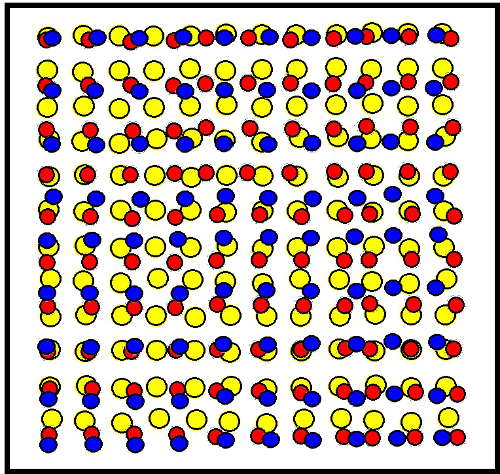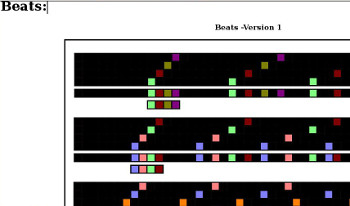

Notes on the "Frequencies" Page:

Binary Frequencies
A Pattern of Increasing Frequencies
in Base 2 -(Black/White)
Frequency Shift: 1 to 20
A Pattern of Increasing Frequencies
in Base 20
Frequency Shift: 1 to 42 (2 Bits)
A Pattern of Increasing Frequencies
in 2 bit representation -Version 1
Frequency Shift: 1 to 43 (2 Bits)
A Pattern of Increasing Frequencies
in 2 bit representation -Version 2
Binary Shift: Mirrored (4 Bits)
A Mirrored Pattern of Increasing Frequencies
in Base 2 -(Red/Blue)
Frequency Shift: 1 to 43 (4 Bits)
A Pattern of Increasing Frequencies
in 4 bit representation
Notes on the "Cycles" Page:

1. an interval during which a recurring sequence of events occurs
2. a series of poems or songs on the same theme
3. a periodically repeated sequence of events
4. the unit of frequency; one hertz has a periodic interval of one second
5. a single complete execution of a periodically repeated phenomenon
6. a wheeled vehicle that has two wheels and is moved by foot pedals
2:n
A Cycle of 2 against increasing cycles (3-12)
in 2 Bit representation
3:n
4:n
A Cycle of 3 against increasing cycles (4-13)
in 2 Bit representation
5:n
A Cycle of 4 against increasing cycles (5-14)
in 2 Bit representation
Composite
A Cycle of 5 against increasing cycles (6-15)
in 2 Bit representation
All of the above
------
Notes on the "Beats" Page:

In acoustics, a beat is an interference pattern between two sounds of slightly different frequencies, perceived as a periodic variation in volume whose rate is the difference of the two frequencies.
When tuning instruments that can produce sustained tones, beats can be readily recognized. Tuning two tones to a unison will present a peculiar effect: when the two tones are close in pitch but not identical, the difference in frequency generates the beating.
When two sound waves of different frequency approach your ear, the alternating constructive and destructive interference causes the sound to be alternatively soft and loud - a phenomenon which is called "beating" or producing beats. The beat frequency is equal to the absolute value of the difference in frequency of the two waves. Arising from simple interference,the applications of beats are extremely far ranging.
Beats -Version 1
Beats -Version 2
Visualization of various frequency sequences
interacting with each other
Beats -Version 3
Visualization of various frequency sequences
interacting with each other
Visualization of various frequency sequences
interacting with each other
Notes on the "Factors" Page:
1 - 10
The Factors found between numbers 1 and 10
11 - 15
The Factors found between numbers 11 and 15
16 - 18
The Factors found between numbers 16 and 18
1 - 18
All of the above
<https://en.wikipedia.org/wiki/Wave_interference>
In physics, interference
is a phenomenon in which two waves
superpose
to form a resultant wave of greater, lower, or
the same amplitude.
Interference usually refers to the interaction
of waves that are correlated or coherent with
each other,
either because they come from the same source
or because they have the same or nearly the same frequency.
Interference effects can be observed with all
types of waves,
for example, light,
radio, acoustic,
surface water waves or matter waves.
--------------------------------------------
<https://en.wikipedia.org/wiki/Intersymbol_interference>
In telecommunication,
intersymbol interference (ISI)
is a form of distortion of a
signal
in which one symbol
interferes with subsequent symbols.
--------------------------------------------